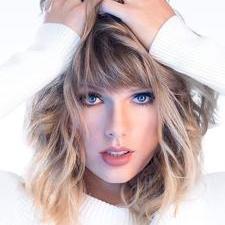Invite Scene - #1 to Buy, Sell, Trade or Find Free Torrent Invites
#1 TorrentInvites Community. Buy, Sell, Trade or Find Free Torrent Invites for Every Private Torrent Trackers. HDB, BTN, AOM, DB9, PTP, RED, MTV, EXIGO, FL, IPT, TVBZ, AB, BIB, TIK, EMP, FSC, GGN, KG, MTTP, TL, TTG, 32P, AHD, CHD, CG, OPS, TT, WIHD, BHD, U2 etc.
LOOKING FOR HIGH QUALITY SEEDBOX? EVOSEEDBOX.COM PROVIDES YOU BLAZING FAST & HIGH END SEEDBOXES | STARTING AT $5.00/MONTH!
Women Still Vastly Underrepresented in Music Creation Process, New Study Finds
-
Check out what our members are saying
Real tracker invite that's non-trivial to get with a quick turnaround for the simple act of site participation. Pretty awesome.Everything was fine. He made a huge effort to find invite for me. Great communication. So if You need an Invite just contact @InviterFairness, speed, professionalism, reasonable price and especially trustworthy. I bought it from you and I will do it again. Thank you. Everything went perfectly. I got a torrent of a childhood TV Show that I couldn't find anywhere else, legal or otherwise.fast and good service i rly recomend this onesmooth processIl migliore venditore, 100%
Everything went perfectly. I got a torrent of a childhood TV Show that I couldn't find anywhere else, legal or otherwise.fast and good service i rly recomend this onesmooth processIl migliore venditore, 100% Did not take long to get my desired account. Good job to @Inviter , for allowing a quick and painless way of getting my account. Thanks again.
Did not take long to get my desired account. Good job to @Inviter , for allowing a quick and painless way of getting my account. Thanks again. Trustable seller, 100% money back guaranteed. Traded ptp, bibliotik and cinematik.
Trustable seller, 100% money back guaranteed. Traded ptp, bibliotik and cinematik. I didn't have much expectation at first but then I got what I was looking for and super fast with an excellent service. Keep the good work. I'm glad this site exist
I didn't have much expectation at first but then I got what I was looking for and super fast with an excellent service. Keep the good work. I'm glad this site exist came on this scene thinking it may be a bit seedy but i found the absolute opposite. Inviter reached out and gave better customer service than pretty much all other services i'v…
came on this scene thinking it may be a bit seedy but i found the absolute opposite. Inviter reached out and gave better customer service than pretty much all other services i'v… Smooth transaction, no complaints at all. Highly recommended!A remarkable man, a pleasing seller, super patient, explained everything to me, discounted me, each and everything. I enjoyed the purchase with him, I received everything immedia…
Smooth transaction, no complaints at all. Highly recommended!A remarkable man, a pleasing seller, super patient, explained everything to me, discounted me, each and everything. I enjoyed the purchase with him, I received everything immedia… Great Service, very prompt reply and solving queries.Very prompt and professional.
Great Service, very prompt reply and solving queries.Very prompt and professional. Everything went well, serious , very fast and pleasant seller . i recommend him all days+Vouch Very Smooth Communication Bought an invite, I will be buying many more invites for sure and hopefully we can build long term relation. Recommended for sure.I would highly recommend anyone looking to find torrents to use this site
Everything went well, serious , very fast and pleasant seller . i recommend him all days+Vouch Very Smooth Communication Bought an invite, I will be buying many more invites for sure and hopefully we can build long term relation. Recommended for sure.I would highly recommend anyone looking to find torrents to use this site Awsome service i love it thanks alotSuperfast communication, very fair and reasonable pricing. I would highly recommend it to anyone that needs a torrent invite 🙂Enormously knowledgeable individual regarding the ins and outs of everything about private torrents and trackers. Not to mention he responds incredibly fast to messages, and his …我想说服务很棒,非常感谢工作人员的帮助
Awsome service i love it thanks alotSuperfast communication, very fair and reasonable pricing. I would highly recommend it to anyone that needs a torrent invite 🙂Enormously knowledgeable individual regarding the ins and outs of everything about private torrents and trackers. Not to mention he responds incredibly fast to messages, and his …我想说服务很棒,非常感谢工作人员的帮助 Inviter supported me a lot and was super fast for the torrent access that I wanted. I will for sure request help from him when I need something else. Glad I reached him and regis…
Inviter supported me a lot and was super fast for the torrent access that I wanted. I will for sure request help from him when I need something else. Glad I reached him and regis… I was nervous spending so much money on an invite at first and there has been some delay due to how hard the access to empornium.me is. But I remained calm and waited for the ve…
I was nervous spending so much money on an invite at first and there has been some delay due to how hard the access to empornium.me is. But I remained calm and waited for the ve… very goodGreat services, 100% satisfied.Last night I had the opportunity to write to the seller about wanting to buy the product. Today I received a reply with detailed instructions on how to pay. I received the prod…Definitely, you can trust him. Fast and efficient.
very goodGreat services, 100% satisfied.Last night I had the opportunity to write to the seller about wanting to buy the product. Today I received a reply with detailed instructions on how to pay. I received the prod…Definitely, you can trust him. Fast and efficient. -
Our picks
-

Buy Empornium Invite
Inviter posted a topic in Premium Sellers Section,
Offering Empornium.is / Empornium.sx / Empornium.me / Empornium / EMP Invite, PM me for the price.
Commodity URL: https://www.empornium.is/, https://www.empornium.sx/, https://www.empornium.me/
Commodity REVIEW: https://www.invitescene.com/topic/40396-empornium-emp-porn-2020-review/-
-
- 695 replies

Picked By
Inviter, -
-

Buy BroadcasTheNet Invite
Inviter posted a topic in Premium Sellers Section,
For limited time I'm offering BroadcasThe.Net (BTN) Invite, PM me for price.
URL: https://broadcasthe.net/-
-
- 371 replies

Picked By
Inviter, -
-
![[In Stock] Buy REDActed.CH (RED) Invite](//www.invitescene.com/applications/core/interface/js/spacer.png)
[In Stock] Buy REDActed.CH (RED) Invite
Inviter posted a topic in Premium Sellers Section,
For limited time I'm offering REDActed.CH (RED) Invite, PM me for price.
URL: https://redacted.ch/-
-
- 112 replies

Picked By
Inviter, -
-






![[In Stock] Buy REDActed.CH (RED) Invite](https://www.invitescene.com/uploads/monthly_2019_12/Redacted.png.a96849d08b6f36b6140a4ead4a4cceba.png)
Recommended Posts
Join the conversation
You can post now and register later. If you have an account, sign in now to post with your account.